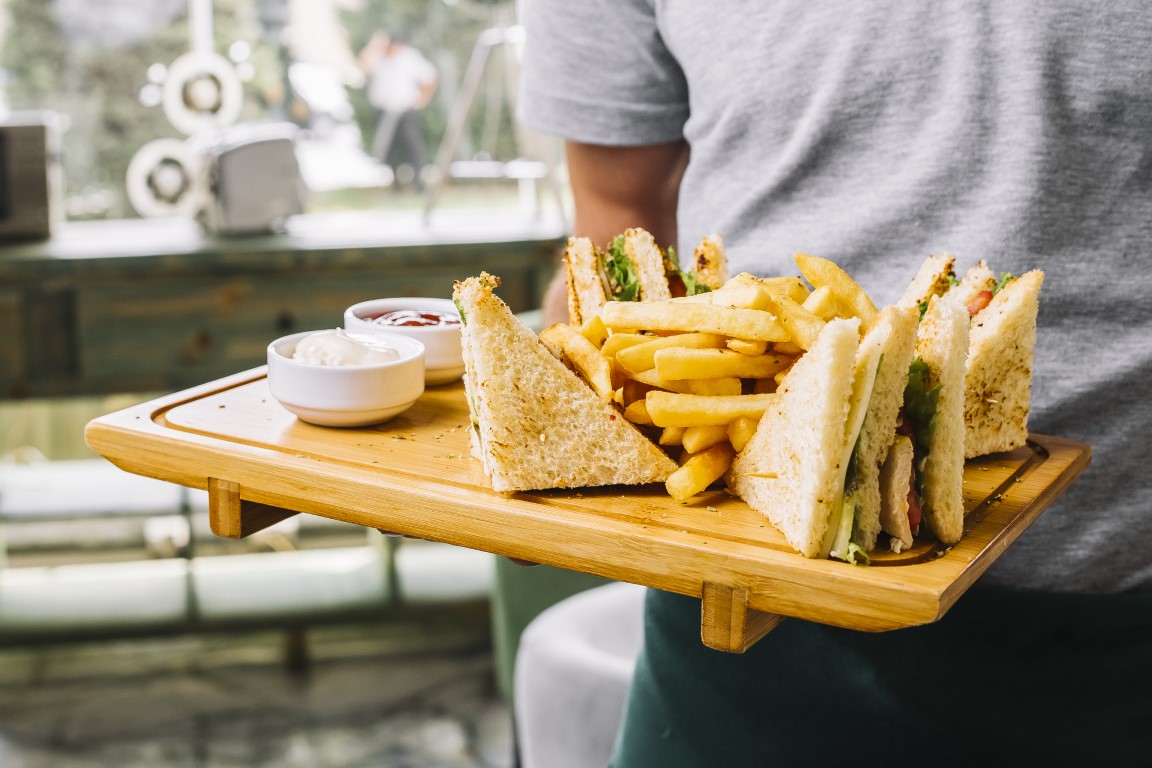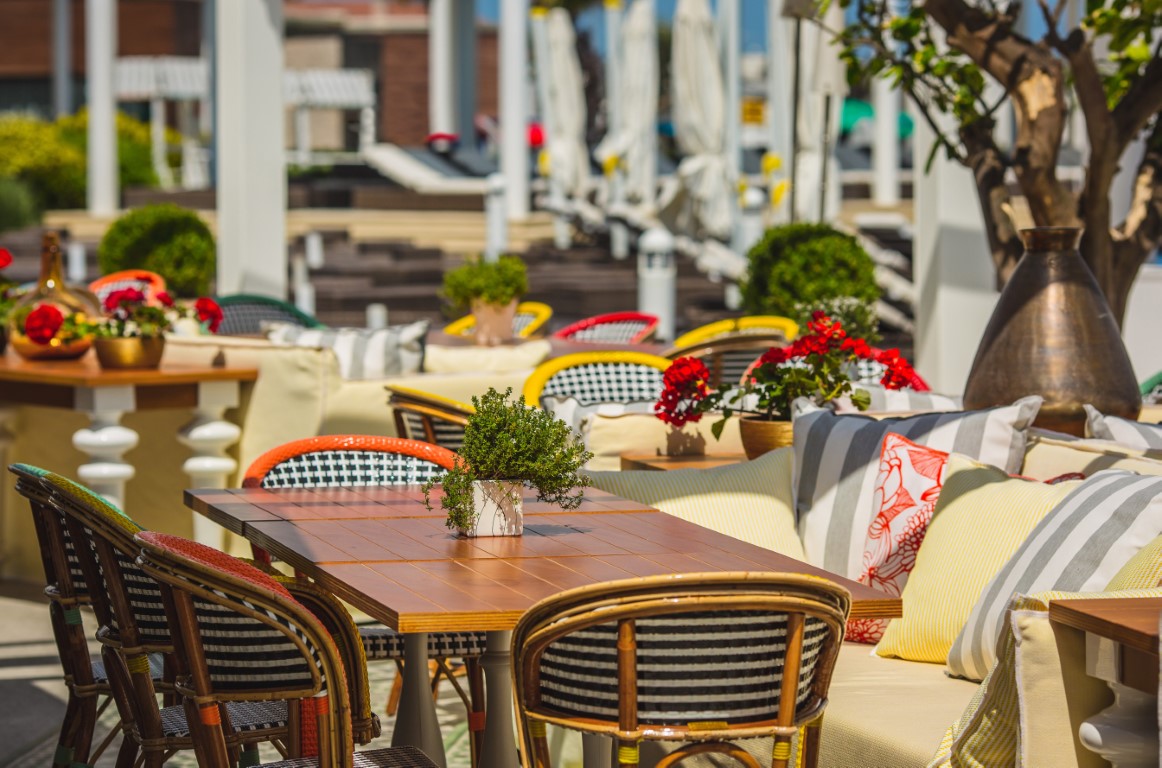Hotel restaurants face the unique challenge of catering not just to guests but also to a broader spectrum of diners, including local residents, business travelers, and casual passersby. To stand out and become a lucrative aspect of the hotel business, these restaurants must employ innovative strategies that emphasize convenience, diversity, and unique dining experiences. Here are detailed approaches to address the highlighted points:
1. Separate Entries for Diverse Clientele
Creating separate entrances for hotel guests and non-guests ensures that the restaurant is seen as a standalone destination. This not only enhances the restaurant’s accessibility but also invites local foot traffic, encouraging the idea that the dining experience is open to all, not just those staying at the hotel.
2. Offering Diverse Food Options All Day Long
To cater to the varied schedules and preferences of guests and locals, hotel restaurants should offer a wide range of dining options throughout the day. From breakfast buffets to late-night snacks, ensuring that your menu has something for everyone at any time is crucial.
3. Incorporating Varied Snacking Options
Snacking trends have evolved, and diners often look for quick, delicious, and healthy options. Offering a variety of snacking choices, from gourmet bites to local delicacies, can attract a diverse crowd.
4. Introducing Buffet Services
Buffets are synonymous with variety and value, appealing to guests who appreciate the opportunity to sample different dishes at a fixed price. A well-executed buffet for breakfast, lunch, or dinner can serve as a significant draw.
5. Ensuring Easy Accessibility
The ease of access to the restaurant without the necessity to navigate through the hotel lobby or interact with the reception can make a big difference. It should be as simple as walking in, finding a seat, and placing an order, making the restaurant a convenient choice for everyone.
6. Catering to a Broad Client Range
By positioning the restaurant as a neighborhood hub, you can attract a wide range of customers, from hotel guests to local workers looking for a quick lunch or a relaxed dinner spot. Understanding and catering to this diverse clientele can significantly boost the restaurant’s reputation and revenue.
7. Architectural Innovations
Investing in architectural modifications that make the restaurant space inviting and distinctive can have a profound impact. Whether it’s an open kitchen concept, a rooftop dining area, or cozy booth seating, the design should intrigue and draw in guests.
8. Integrating Cutting-edge Technology for Enhanced Efficiency and Reduced Wait Times
Incorporating advanced technology solutions, such as “Call The Service,” revolutionizes how hotel restaurants operate, significantly impacting both operational efficiency and the overall guest experience. By enabling guests to effortlessly order, call for service, and handle payments through an intuitive digital platform, these technological integrations address several key areas:
-
Reduced Waiting Time: One of the most immediate benefits is the substantial reduction in waiting times for guests. From the moment they are seated, diners can browse the menu, place orders, and even settle their bills directly from their smartphones. This eliminates the traditional delays in catching a server’s attention, waiting for the menu, placing an order, and processing payment, thereby streamlining the entire dining process.
-
Operational Efficiency: For the restaurant, operational efficiency is markedly improved. Orders transmitted directly from the digital platform to the kitchen reduce errors and speed up order preparation. Staff can focus more on providing quality service rather than managing transactions, leading to better resource allocation and smoother restaurant operations. This technology also provides valuable data that can help manage peak times more effectively, predict ordering patterns, and tailor inventory accordingly.
-
Enhanced Customer Experience: Beyond the practical benefits, integrating such technology elevates the customer experience by offering convenience, speed, and personalization. Guests appreciate the control they have over their dining experience, from customizing orders to the ease of splitting bills or adding tips with just a few taps. The ability to request service or communicate dietary preferences discreetly through the app also adds a layer of comfort and customization to the dining experience.
-
Feedback and Improvement: Another significant advantage is the immediate feedback loop this technology provides. Guests can leave real-time feedback on their dining experience, allowing the restaurant to address any issues promptly and make continuous improvements. This direct line of communication fosters a positive relationship between the restaurant and its patrons, encouraging repeat visits and loyalty.
9. Diverse Pricing and Online Marketing
Offering menu items at various price points caters to a wider audience. Utilizing online marketing, especially social media, to highlight menu specials, promotions, and events can draw attention and drive traffic.
10. Expanding Outdoor Dining Options
Outdoor dining has become a sought-after experience. Providing an attractive outdoor seating area, perhaps with garden elements or a view, can add significant appeal.
11. Positioning the Restaurant as the Main Attraction
Reimagining the hotel layout so the restaurant, with its unique offerings and inviting atmosphere, stands at the forefront can transform the dining space into the hotel’s economic powerhouse and primary draw.

12. Incorporating Street and Fast Food Elements for a Unique Dining Experience:
Integrating the dynamic and accessible elements of street and fast food into a hotel restaurant’s offerings can significantly enhance the guest dining experience, marrying the ease and rapid service of these food styles with the higher quality and attentive service characteristic of hotel dining. This innovative approach not only caters to a wider range of guest preferences but also sets the hotel apart in a competitive market.
-
Diverse Menu Selection: By including street food and fast food options, hotel restaurants can diversify their menu with a variety of global flavors and quick bites. This allows guests to enjoy a broad spectrum of culinary choices, from local delicacies and international street food favorites to gourmet versions of classic fast food items. Such a varied menu ensures that the dining needs of both in-house guests and casual visitors are met at all times of the day.
-
Quick Service Model: Adopting the quick service model characteristic of street and fast food operations can significantly reduce waiting times and enhance guest satisfaction. Implementing a grab-and-go section or a quick-order counter within the restaurant allows guests to enjoy a meal without the wait, ideal for those with time constraints or looking for a casual dining option.
-
Interactive and Open Kitchen Design: Emulating the transparency and immediacy of street food vendors, hotel restaurants can incorporate open kitchen designs or live cooking stations. This not only adds an element of entertainment and engagement to the dining experience but also reassures guests about the freshness and quality of their meals.
-
Atmosphere and Seating Flexibility: Integrating street and fast food elements extends to the dining area’s design and layout. Casual seating arrangements, communal tables, and outdoor dining options can recreate the vibrant and social atmosphere of street food markets, encouraging interaction among guests and creating a lively dining environment.
-
Marketing and Themed Events: Leveraging the popularity of street and fast food, hotel restaurants can organize themed nights or special events that showcase street food from different cultures. This not only serves as a powerful marketing tool to attract a broader audience but also provides guests with unique and memorable dining experiences.
-
Quality and Sustainability: While embracing the casual dining model, hotel restaurants can still emphasize the quality of ingredients and sustainable practices. Offering gourmet street food and elevated fast food options made with high-quality, locally-sourced ingredients can appeal to health-conscious and environmentally aware guests.
Conclusion
By focusing on these strategic areas, hotel restaurants can not only meet but exceed the expectations of a diverse clientele, ensuring a profitable and dynamic dining environment. From architectural innovation to the integration of new technologies and catering to the evolving tastes and preferences of diners, these strategies are designed to position hotel restaurants not just as an amenity for guests but as a destination for all.


